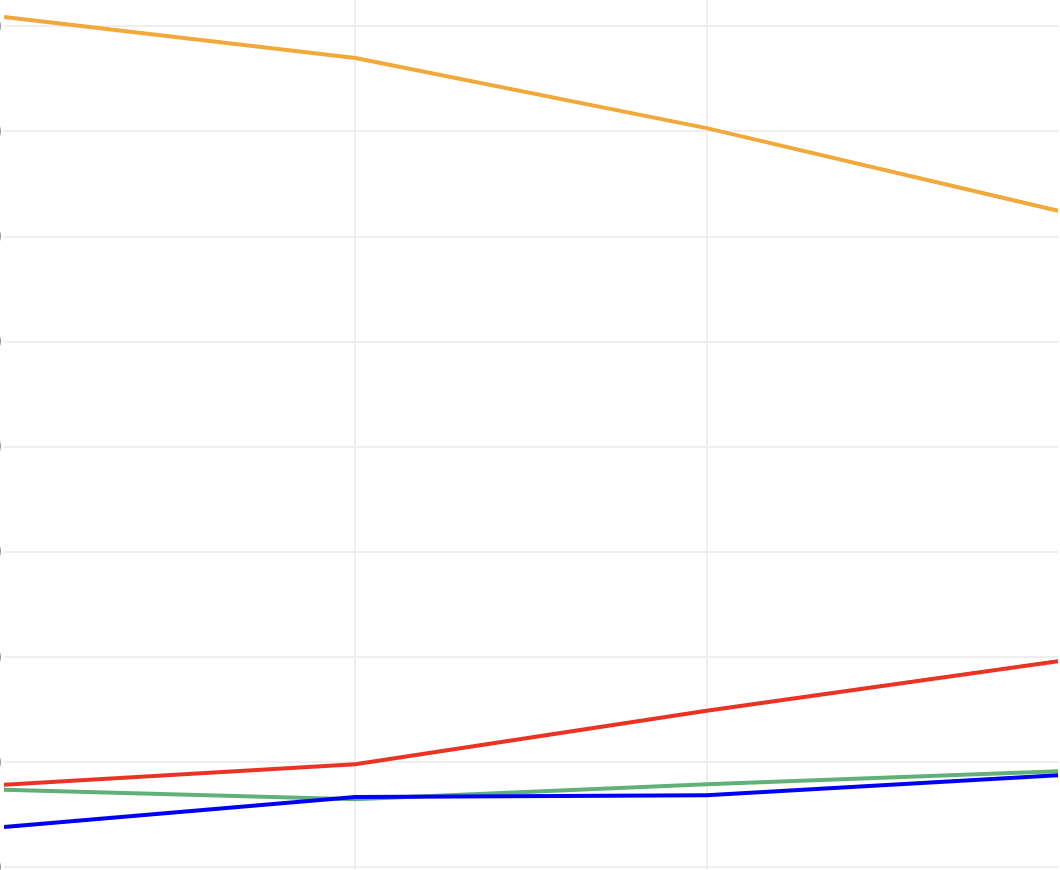Last week I updated my blog post analysing the vote for the bigger parties across Greater Sydney, with a map showing vote and swings.
In the process of doing other analysis I realised I hadn’t actually looked at the numbers of councillors elected. There’s also an interesting story about how voters outside of Greater Sydney are voting. While voting for independents remains the predominant choice, parties are growing quickly.
I’ve split up results between Greater Sydney and the remainder of the state for a few reasons. Firstly, Greater Sydney elections are primarily partisan, but it also just makes sense as a unit of study. Also importantly I have my own dataset of results dating back to 2004 for Greater Sydney and 2008 for the remainder which separates the results based on this dividing line. There are some large partisan elections outside Sydney (such as Newcastle, Wollongong and surrounding councils) but the remainder of the state is dominated by low-population councils mostly run by independents.
First up, let’s have a look at the seat counts for Greater Sydney.
While the Greens won more votes in Greater Sydney in 2021 than their previous peak in 2008, they won a much smaller share of the seats, winning just 7.7%, compared to 10.2% in 2008. This likely reflects that the Greens now run in more large Western Sydney wards but don’t win seats, while some of their most successful councils have been amalgamated. The Greens are probably doing just as well in the Inner West as they did in 2008, but that produces a lot less councillors than back in 2008 when they won 14 seats (compared to five this year).
There was basically a three-way tie between Labor, Liberal and other candidates and parties (including independents, local parties and minor parties other than the Greens) in 2016-17, with 124-125 seats each. That was a low point for the ‘others’ group, and they’ve bounced back a bit in 2021. It was a high point for Labor as far back as 2004, and Labor’s council seat count has gone down slightly in 2021, despite an increased vote. It was part of a decline in the Liberal peak from 2012, which has accelerated in 2021.
The parties are much less advanced outside Sydney, but they are still making advances.
First up, this chart shows the vote split:
The other vote was over 80% in 2008, but has declined precipitously, down to 62.5% in 2021.
The three biggest parties have all advanced, but Labor has experienced the most growth, increasing from 7.9% to 19.6%. The Greens have gone up from 7.4% to 9.2%, while the Liberal Party has jumped from 3.9% to 8.8%.
This shift looks far less dramatic when you look at the seat count:
Almost 85% of councillors outside Sydney are not part of one of the three larger parties, despite polling just 62.5% of the vote.
This largely reflects that independent-dominated councils tend to be much smaller and require less votes to get elected. 52 councils out of 124 up for election had no Labor, Liberal or Greens candidates. Four of those councils did not have a single vote cast, as the whole council was uncontested. That’s over 40% of councils, but they accounted for just over 10% of all votes cast.
Finally, it’s worth mentioning the emergence of the Shooters, Fishers and Farmers party in local government. They won two seats in Orange in 2017 after winning a state by-election in the same area the year before. This year they won five seats: one each in Coolamon, Orange, Goulburn Mulwaree, Singleton and Hawkesbury. They don’t appear in my charts above (they’re just lumped in with “others”) but it’s an interesting trend.



